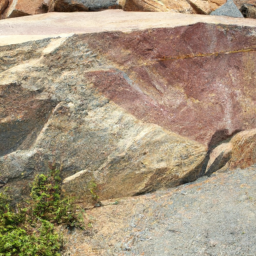Rock Landscaping Basics
Table of Contents []
How Deep Should Rock Be For Landscaping
Introduction
Rock landscaping has become increasingly popular, but many home gardeners wonder, How deep should rock be for landscaping? This article will discuss the various factors that should be taken into account when considering how much rock to include in a landscaping project. We'll cover topics such as the kind of rock to use, cost implications, drainage considerations, edging techniques, and designing for aesthetics. By understanding and taking these factors into account, you can ensure your rock landscaping project will look great and stay within budget.
Types of Rock To Use
When it comes to deciding how deep to set rock for landscaping, the type of rock chosen is a major factor. Larger rocks like boulders and cobbles usually must be laid at least 8 inches deep, while medium-sized rocks such as pebbles and crushed gravel should be set at 4-6 inches. This depth is important for large rocks to ensure stability as well as create visual impact. For smaller rocks, the shallower depth is all that is needed for both stability and aesthetics.
Cost Considerations
Costs can rapidly add up when using rocks for landscaping, so it's important to consider how much material is needed to get the desired look. The larger the size and volume of rocks used, the more expensive the project can be. Thus, when determining the depth of rock for a landscaping project, it pays to be judicious in calculating how much material is needed.
Drainage
When factoring in drainage, consider the type of soil and the amount of rainfall your area experiences. Soil that absorbs runoff very quickly may not need a deep layer of rocks in order to reduce flooding. However, if you live in a region with slow-draining soil, then a deeper rock layer may be necessary. If there are drainage concerns specific to your area, contact a local landscaping professional for further advice.
Creating Edges
Edging is an important part of rock landscaping, as it defines the lines and contours of the space. When edging with rocks, a much shallower layer of material is needed than when creating the general coverage of the garden. Rocks can be used to edge pathways, create raised beds, or add accents to other planting areas. Edging will usually only need to be about 23 inches deep in order to create attractive lines and stop mulch or soil from spilling over onto pathways and walkways.
Designing For Aesthetics
When designing with rocks, it's important to consider the overall size and texture of the space. Creating attractive pathways or accents in a garden with rocks requires a certain level of design finesse, so take some time to focus on how the rocks will come together. How will the different sizes of rocks appear in combination with one another? How can you create an eye-catching focal point? How do you want the garden to feel when it's completed? Answering these questions is key to creating a successful and aesthetically pleasing project.
Summary
Rock landscaping can be a great way to add visual appeal and function to a garden. However, understanding the logistics of how much and how deep to set the rocks is essential in order to get the desired look and stay within budget. When considering how deep to set the rock for the project, take into account the type of rock chosen, cost implications, drainage considerations, edging techniques, and design for aesthetics. With a bit of thought and planning, rock landscaping can be a beautiful and cost-effective upgrade for your garden.

Previous Page
